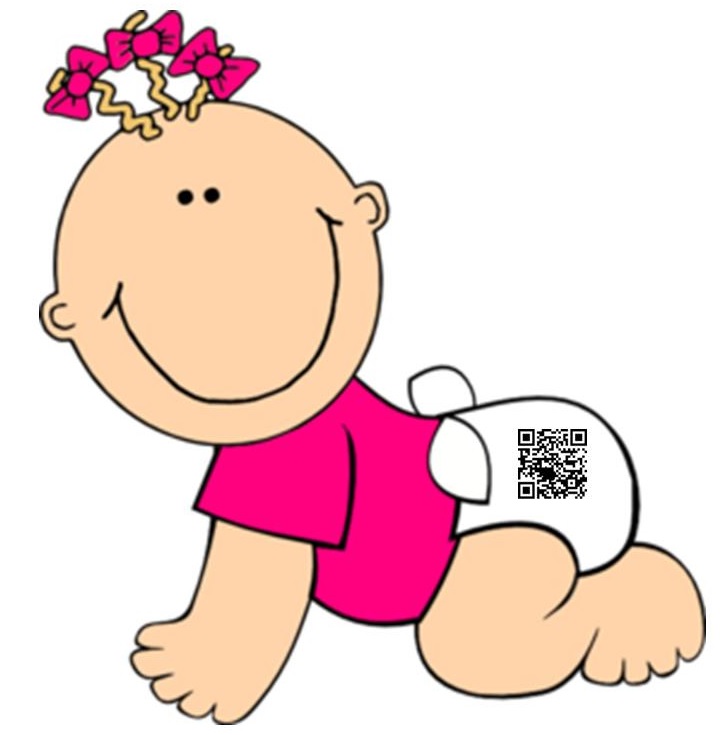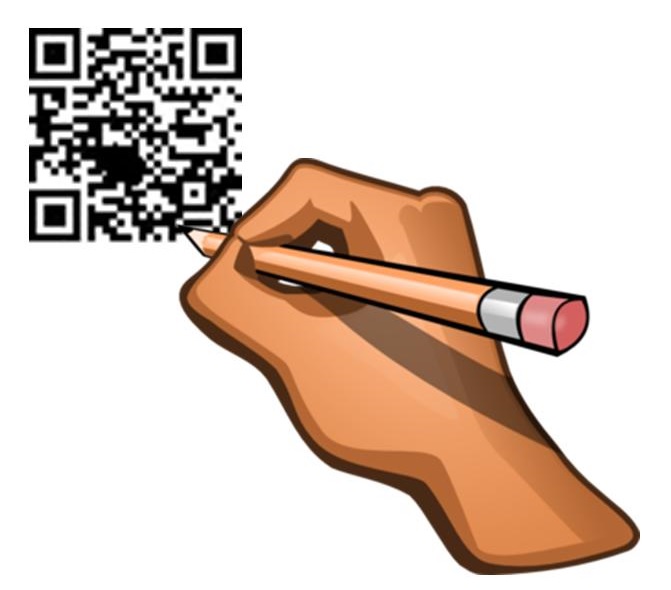The latest “smart diaper” product provides parents with a color coded system to detect urinary tract infections.
A new form of diaper that uses scannable QR codes has just been invented by an American husband and wife team that will help other parents to be able to detect potentially developing urinary issues before they become problematic.
Though the product is only in its prototype phase now, it has the potential to be very helpful to concerned parents.
The design of the diaper includes strips that come in contact with the absorbent area and that change color when they are wet. These strips are located around QR codes that can then be scanned by the parents of the child.
When the QR codes are scanned the associated app snaps an image of the color of the strips.
 The app then proceeds to perform an analysis of the color of the strips so that the parent can tell whether or not a urinary infection may be present. The reason that these QR codes can be very helpful to parents is that urinary tract infections (UTIs) impact approximately 8 percent of all babies. They are a particular concern among girls.
The app then proceeds to perform an analysis of the color of the strips so that the parent can tell whether or not a urinary infection may be present. The reason that these QR codes can be very helpful to parents is that urinary tract infections (UTIs) impact approximately 8 percent of all babies. They are a particular concern among girls.
Without tools such as the QR codes on the color coded diapers, it can be very difficult for parents to detect the infections until they have fully developed and begin presenting very unpleasant symptoms such as fever and irritability.
With the smart diaper, parents are armed with a form of early warning system that can let them know if an infection could be coming on, even before any other symptoms have appeared. All that is required is that QR codes be scanned once per day or so. The app not only scans the color of the strips on the diaper, but it also stores the data so that medical professionals can examine it during checkups or if a problem has been detected. This can help doctors to recognize potential dehydration or kidney dysfunction.
Though the response to these QR codes on diapers has been very positive, Netmums, a U.K. based parenting advice website has cautioned parents not to forget to use common sense just because they have a new technology tool.
The latest technology news from the arena of quick response codes is that they are getting easier to generate.
Mobile marketers have adored the opportunity that QR codes have had to offer, using them on everything from product packaging to magazine ads, but these are barcodes that have traditionally been generated by computers.
However, MIT Media Lab researchers are now making it possible to use graffiti for the exact same purpose.
These graffiti QR codes would allow a hand drawn barcode, created on virtually any surface, to be converted into a scannable and readable image that smartphone users could turn into a much broader amount of content. In order to achieve this goal, the researchers had to change the way that the barcodes would be read in the first place.
Traditional QR codes are scanned using a barcode reading app that snaps an image of the black and white square.
 With the new graffiti style of QR codes, the user would simply move the smartphone over the path in order to access the content to which it is linked. The accelerometer in the device is able to detect the pattern of the movement and is then able to load the content to which that particular path is connected.
With the new graffiti style of QR codes, the user would simply move the smartphone over the path in order to access the content to which it is linked. The accelerometer in the device is able to detect the pattern of the movement and is then able to load the content to which that particular path is connected.
As the method uses only the smartphone’s movement in order to read the barcode, instead of actually scanning the QR codes themselves, it means that the shape would no longer be limited to a pixilated square. Instead, the barcode can be drawn using any kind of material and onto any type of surface.
Possible uses, for example, are that a graffiti QR code could inform the smartphone user regarding what the art represents, who created it, what materials were used, and other relevant and interesting information.
One of the Media Lab’s Viral Spaces group members, Jeremy Rubin, said that there is a great deal more potential to these QR codes. For example, it could provide the opportunity to share relevant content to the smartphones of consumers while they are taking part at a certain activity within a location. For example, while riding an escalator up to the next floor of a store, it could provide information regarding what they are about to see and what products are located on the next level.
 The app then proceeds to perform an analysis of the color of the strips so that the parent can tell whether or not a urinary infection may be present. The reason that these QR codes can be very helpful to parents is that urinary tract infections (UTIs) impact approximately 8 percent of all babies. They are a particular concern among girls.
The app then proceeds to perform an analysis of the color of the strips so that the parent can tell whether or not a urinary infection may be present. The reason that these QR codes can be very helpful to parents is that urinary tract infections (UTIs) impact approximately 8 percent of all babies. They are a particular concern among girls.
 With the new graffiti style of QR codes, the user would simply move the smartphone over the path in order to access the content to which it is linked. The accelerometer in the device is able to detect the pattern of the movement and is then able to load the content to which that particular path is connected.
With the new graffiti style of QR codes, the user would simply move the smartphone over the path in order to access the content to which it is linked. The accelerometer in the device is able to detect the pattern of the movement and is then able to load the content to which that particular path is connected.